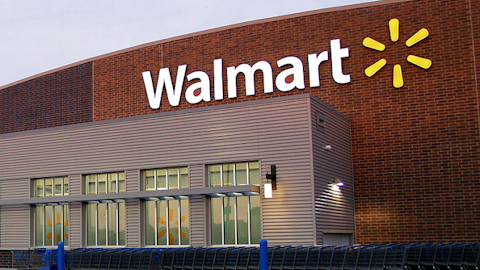Kevin Grundy: Great. Thanks. Good afternoon. And congrats everyone on a good year. Two for me, if I could. Gavin, one just a comment you made on the longer-term outlook, wanted to drill down on that; and then Tracey, just on return of capital. So first one, Gavin, for you. I noted with interest your comment that you expect higher top and bottom line growth going forward relative to what the Company expects in 2023. I’d argue that’s not much to get on your share price, I guess, number one. Number two, does that imply mid-single-digit top line and EBT growth longer term? Maybe just sort of drill down, Gavin, if you wouldn’t mind a little bit on some of the optimism around the outlook. Also just sort of reconcile that with the impairment charge. We all get that it’s noncash. We understand that there’s a higher discount rate being used. But maybe just sort of reconcile those two things. And then, I have a follow-up for Tracey. Thank you.
Gavin Hattersley: Okay, Kevin. Yes. So from a midterm guidance point of view, obviously, we look at the total basket of our P&L and look at what we expect from a pricing point of view, what we expect from our brand performance point of view as the plans and the additional ad spend that we’re putting in place in 2023, has an impact, our innovation pipeline, what’s happening with our brands in EMEA, APAC, Canada rebounding as we increase investment in Canada as well. And as the efficiency projects come through and a more normalized cost of goods sold environment in the out years. So, that gives us confidence to give medium-term guidance that is at a higher level than what we currently have for the near term, where I think things are a little bit more uncertain and there’s a little bit more caution around that.
There was a second part of that question? How does the impairment? Well, you can handle the impairment, Tracey. Obviously, the interest rate environment had a meaningful role
Tracey Joubert: Yes. So, Kevin, I’m sure you’re aware that the — we’re required to do an annual impairment exercise. And it’s really a mathematical equation of future cash flow. The big driver, as you mentioned, the big input is the rise in the interest cost, and I think you’re seeing that everywhere, and then, the inflationary impact that we are seeing on our costs. But we remain optimistic about the growth outlook for our company, as Gavin mentioned, performance beyond 2023. And in particular, our optimism around our America business units, and we’re committed to achieving the top line and bottom line growth.
Gavin Hattersley: So to tie both, Kevin, I mean, obviously, when we started our Revitalization Plan, the goal was to get to both, top and bottom line growth. We did that in 2022. We’re guiding to that in 2023. And we expect to deliver that on a consistent basis now going forward, given where we are from a company point of view with our brands and our overall cost structure. I think you said you had a second question.
Kevin Grundy: Yes, I’ll follow up. Yes. No, that makes sense. Just the cross currents between better delivery over the past few years, I would say, and then, Gavin, your optimism going forward with the higher discount rate. But I can chat with Greg and Tracey offline. Tracey, for you real quick, not to monopolize time. But I think it’s important, you guys have made tremendous progress with debt leverage in extremely volatile environment. So now down to 2.9 times debt leverage, the target is 2.5 times, can you comment on the Board’s interest in returning even greater cash to shareholders, which would seem to be near and would be very accretive, particularly from an EPS perspective, given where your stock is trading? Maybe comment a bit on the time line for a return to a much greater share repurchase than we’ve seen recently while the Company expense is leveraging. Thank you. I’ll pass it on.
Tracey Joubert: Yes. Thanks, Kevin. Look, our capital allocation priorities remain the same. We want to invest in our business to drive sustainable top and bottom line growth. And as Gavin mentioned, we put money in the business where we’re modernizing our breweries. We’ve got some upgrades that are going into our breweries, which always help in delivering cost savings and efficiencies. The second bucket is reducing the debt. We have a desire to maintain and over time improve our investment-grade rating. And I think we have made tremendous progress and have now given this sort of leverage target ratio of 2.5 times, which will give us much more flexibility from a capital allocation point of view. And then, the third bucket, to your point, is returning cash to shareholders.
So, we’ve raised our dividend twice since reinstating it in 2021. And our intention is to sustainably increase that dividend. Now, we do have a small buyback program that you’re aware of, essentially an anti-dilution program for employee equity grants. But in terms of anything bigger, we run all our capital allocation decisions through our models –, influencing us, we would provide the greatest return for our shareholders. And we’ll continue to have those conversations with our Board.
Operator: Our next question comes from Vivien Azer of Cowen & Co.
Vivien Azer: Hey Gavin, I was hoping you could expand on your medium-term aspiration for continued positive mix shift. Certainly, your beyond beer would seemingly be a key contributor to that. But could you perhaps dimensionalize the contributions that you would expect from alcoholic beyond beer the year versus non-alcoholic?
Gavin Hattersley: Thanks, Vivien. Yes. Look, I mean, we’ve made tremendous progress actually on our above premium and our beyond beer pillars of our Revitalization Plan. It was a core tenet of our plan was to aggressively premiumize the portfolio. And we’ve now taken that, as I said, to a record level of 28% and I think it was 23% when we started this process. So obviously, our continued efforts in this space continue. We’ve got brands like Topo Chico and Blue Moon and Peroni and Simply Spiked and emerging growth brands like ZOA in Europe. As I said we’ve got MadrÃ. So, above premium certainly is an area that I would expect us to continue to grow. And we put out a number there of almost a third of our NSR in the medium term is going to come from above premium.
So, that will certainly improve our overall mix. On top of that, we’ve laid a nice foundation in the spirits space, both in the large bottle, but also we’ve got a really nice innovation coming with Topo Chico Spirited in this current year, both of which — for Five Trail and for Topo Chico, we have high expectations for. So, you can expect our above premium portfolio to get an ever larger part of — would be an ever larger part of our portfolio, and that obviously has benefits all the way through the P&L.
Operator: Our next question comes from Robert Ottenstein of Evercore ISI.
Unidentified Analyst: This is Greg on for Robert. Just a quick question and then maybe a follow-up after that. But you just went through the $600 million and you delivered above that on your cost savings, which is great. Any color on kind of what the cost saving outlook is from here, any new targets to just kind of how we should through that? And then, just one quick follow-up after that, please. Thanks.
Tracey Joubert: Yes. I’ll take that question. Thanks, Greg. So, we are — yes, we were very happy that we were able to slightly overdeliver on that $600 million of cost savings. Now, we haven’t implemented a new formal cost savings program that we’re communicating externally. But we obviously do have internal targets. We continue to expect cost savings. But, it’s just a way of life at Molson Coors. We’re always seeking ways to improve our efficiencies whether that be in terms of production or other areas like marketing that Gavin just spoke to. So, we’ll continue to look for ways that we can continue to deliver cost savings, but no formal program at this stage.





